Picture this: You’ve spent hours researching the perfect Paddle For A Kayak, comparing hull designs, weight capacities, and storage features. But as you glide onto the water, something feels off. Your arms tire quickly, your strokes lack power, and maneuvering feels like a chore. What’s the culprit? Often, it’s not the kayak—it’s the paddle.
Choosing the right paddle is the unsung hero of kayaking. A flawless kayak paddle selection can transform your experience, turning grueling paddles into effortless adventures. But with countless options—feather angles, blade shapes, and materials like carbon fiber or fiberglass—how do you find the perfect match?
In this guide, we’ll break down the science behind paddle length, the pros and cons of the best kayak paddle material, and how to avoid common mistakes that leave paddlers frustrated. Whether you’re navigating serene lakes or tackling choppy rivers, your paddle is your lifeline. Ready to unlock smoother strokes, better control, and a ride that feels like an extension of your body? Let’s dive in.
The Key Factors To Consider

To start, you need to get acquainted with the key factors that will guide your choice:
- The Length
- Blade Choice
- Materials Used
- The Shaft Type
Length

The correct length of a paddle is determined by the width of your boat and your height. If you find yourself between two recommended sizes, known as ‘tweener’ sizes, I advise going for the shorter option for the sake of weight efficiency. However, if your torso is comparatively shorter, the larger size might suit you better.
Blade Choice
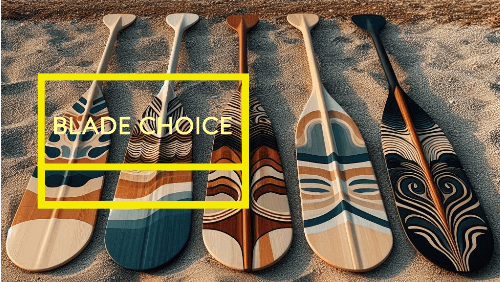
But it’s not just about length. The blade of your paddle is like the engine to your kayak. You’ll need to choose between low- and high-angle paddles, each designed for different types of strokes and thus, different kayaking experiences.
Materials Used
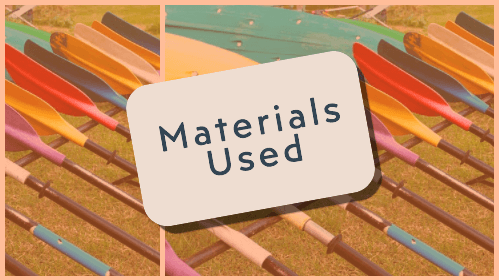
On top of that, paddles are made from a variety of materials, each with their trade-offs in terms of weight, durability, and cost.
Shaft Type
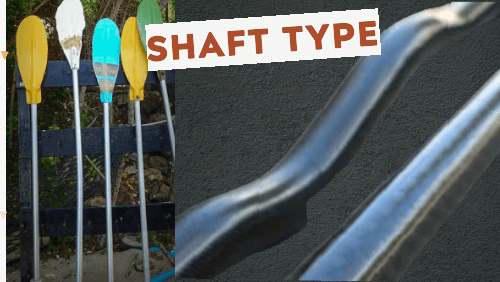
Finally, your choice of shaft could be the difference between enjoying your trip and finishing it with sore wrists. Straight shafts are generally the norm, but bent shafts can give you an ergonomic advantage, reducing strain during powerful strokes. Not to mention, you’ll also need to decide on a two-piece or four-piece, which greatly impacts transport and storage.
Having a clear understanding of these basics will set you up for a more informed decision, ensuring you select a paddle that’s just right for you.
As we continue, I’ll break down these choices further, giving you the tools to navigate through the specifics and nuances of each paddle component.
Navigating Through Paddle Specifics
Selecting a kayak paddle goes beyond just grabbing the first one you see. The paddle you choose directly impacts your efficiency on the water, the effort required to paddle, and even the enjoyment of your kayaking outings.
Angle Of Paddling: Low-angle And High-angle Paddles

Let’s start with the angle of your paddling. Low-angle paddles, favored for casual or long-distance excursions, encourage a more relaxed stroke paralleling the kayak’s side.
On the flip side, high-angle paddles are for the energetic, fitness-focused kayaker and support a more vertical, vigorous stroke. This distinction is not just about preference; it’s also about technique and the kayak type you’ll be propelling.
Blade Material

The blade’s material significantly influences your experience. Plastic blades are the rugged workhorses, highly durable but on the heavier side.
Fiberglass hits a sweet spot, offering a good balance of weight and durability without overly straining your wallet. Carbon-fiber blades are the high performers. They’re incredibly light and efficient, translating to swift, responsive strokes.
Shaft Material And Design
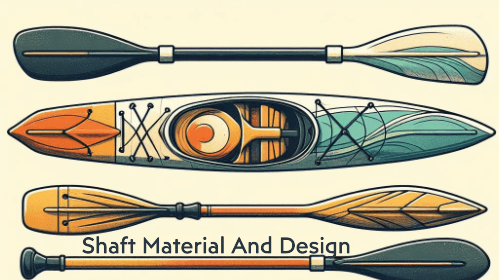
Now consider the different shaft materials. Aluminum shafts stand up to abuse but transfer the cold during chilly days. Carbon and fiberglass options are lighter and warmer to the touch, improving comfort and reducing fatigue over time.
A well-chosen paddle feels like an extension of your arms. So when it comes to choosing the shaft, it’s not just about the material.
Bent shafts align with your wrists, allowing for a more natural position during the stroke’s power phase and minimizing strain. If you lean towards paddles that are easy to stash away or transport, look at the number of pieces the shaft can be broken into. Four-piece shafts tuck away best, making them ideal for paddlers on the move.
Feathering
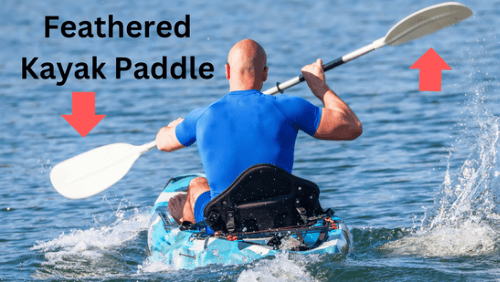
The decision on feathering and setting the blades at different angles relative to each other can also play a significant role.
If your paddling frequently encounters wind, feathered blades can be tilted to slice through the air more easily, conserving your energy during those non-stroking moments. Paddles often offer adjustable feather settings, giving you a flexible setup to match your strokes to the conditions at hand.
Customizing Your Paddle to Fit Your Style
Your choice in a kayak paddle is not just about efficiency in the water; it’s a reflection of your paddling style and the kind of kayaking you enjoy. Every detail, from length to blade shape, can enhance your experience, whether you’re slicing through white water, racing against the clock, or peacefully touring a serene lake.
Length: Finding The Balance Between Propulsion And Endurance
The length of your paddle is more than a number on a measurement chart; it’s about finding a balance between propulsion and endurance.
A shorter paddle often means quicker, more powerful strokes, ideal for sprint racing or navigating white waters, where paddle lengths typically range from 185cm to 210cm.
On the other side of the spectrum, a longer paddle, generally between 210 and 230cm, is the go-to for sea kayaking and touring, crafted for efficiency over broader distances. And if you’re settled in a fishing kayak, extending beyond 230cm in length can provide the additional reach needed without having to lean over and risk tipping.
One Or Two-Piece: Choosing Between Portability And Strength

The choice between a one or two-piece paddle comes down to your storage and transport needs. Splitting a paddle down the middle, two-piece paddles are effortlessly portable, sliding into the trunk of a car or the hull of your kayak with ease. While they’re convenient, one-piece paddles are valued for their strength and reduced weight, making them a steadfast companion for those who prioritize paddle integrity over modularity.
Blade Style: Matching Your Stroke To Your Kayak
When it comes to blades, a high-angled style excels for those who put their strength into each stroke, demanding speed and agility from their kayak.
Conversely, a low-angled blade affords a relaxed rhythm to your paddling, promoting stability and stamina over long distances.
In specialized domains, wing paddles are preferred for their distinctive technique, while Greenland paddles are chosen by those seeking minimal resistance and joint strain.
Shaft Design: Ensuring Comfort And Efficiency

Shafts come with their own set of considerations. A straight shaft is the standard, tried and tested over time. Yet, some paddlers look to bent or crank shafts for that extra ergonomic grip, offering a more natural wrist alignment which can reduce fatigue on longer trips. Choosing the right shaft is essential for enduring comfort and efficiency on your kayaking adventures.
Making Your Final Paddle Selection
After diving into the specifics of kayak paddles, it’s clear that there’s more to it than meets the eye. The right paddle is not just an accessory; it’s a vital piece of equipment that directly influences your comfort, performance, and enjoyment on the water.
Material Choice: Balancing Budget And Performance
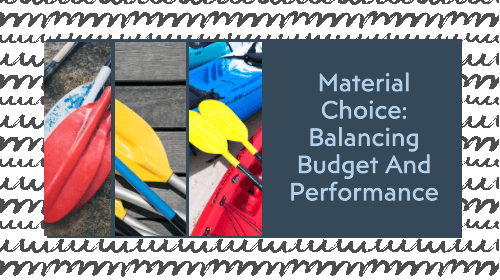
Material choice is crucial. If budget is a concern, aluminum or plastic might be your go-to, but for those eyeing performance, the investment in fiberglass or carbon fiber could enhance your kayaking experience tenfold.
Paddle Size: Finding The Perfect Fit

Don’t forget to measure twice and choose once when it comes to paddle size. Your kayak’s width and your torso length are definitive guides to finding that perfect paddle fit, ensuring efficiency and reducing fatigue during your water escapades.
Share Your Paddling Stories And Tips
I encourage you to use this knowledge to find a paddle that feels like an extension of your own arms. And once you do, I’d love to hear about it.
Comment below, ask any lingering questions, or share your paddling experiences. It’s through exchanging our stories and tips that we all grow as paddlers. Now, grab your paddle and make some waves!

